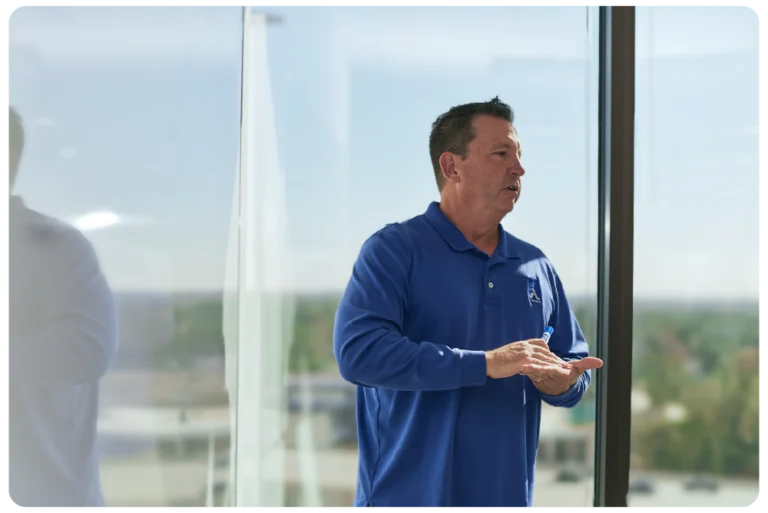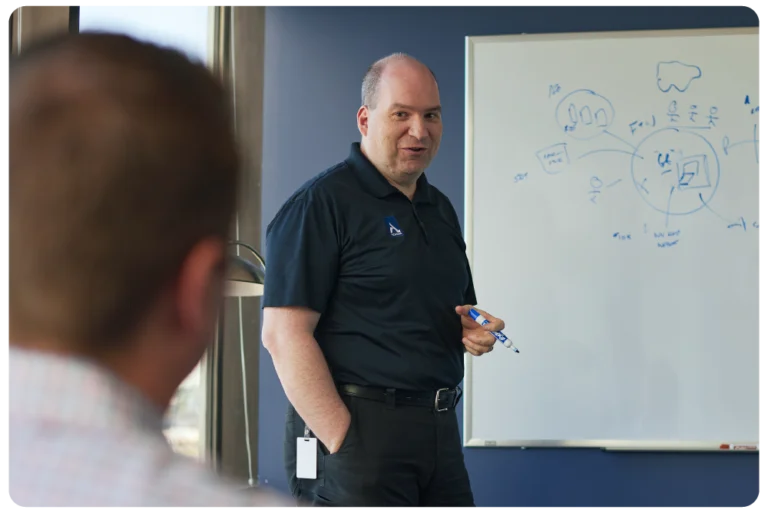In manufacturing, every minute matters. When a CNC machine sits idle, when your ERP system freezes mid-job ticket, or when your operators are staring at a blue screen instead of a work queue—it’s not just frustrating. It’s expensive.
5 IT Issues That Cost Manufacturers the Most
1. Downtime That Stops the Line Cold
The Problem:
When a critical system goes down, your operators, machines, and managers all grind to a halt. In manufacturing, that’s not just annoying—it’s catastrophic. Downtime kills throughput, delays orders, and sends customer confidence into a nosedive.
Example:
An unexpected system crash takes down your scheduling dashboard. For an entire shift, your welders and CNC operators don’t have visibility into what was queued next. You have to revert to printed job orders and walkie-talkies just to keep things moving. By the time systems are back online, you’ve lost over 12 hours of production and spent the weekend in catch-up mode.
Why It Hurts:
- Blown delivery timelines
- Overtime and idle labor costs
- Production chaos and morale dips
- Risk to long-term customer contracts
Resilience starts with infrastructure built to fail gracefully—real-time backups, monitored systems, and smart recovery plans. Downtime might be inevitable, but lost revenue doesn’t have to be.
2. Patchwork IT That Can’t Keep Up with Growth
The Problem:
Most manufacturers grew their IT environment piece by piece—an old server here, a new switch there, maybe a router borrowed from another plant. But now you’re growing fast, and the Frankenstein network you’ve relied on can’t scale.
Example:
You open a second facility, expecting it to plug into your existing systems. But your ERP platform struggles to serve both sites, VPNs drop connections, and job status updates lag by hours. Operators at the new plant are calling the original site just to confirm what to build. What should have been a milestone moment turns into a logistical nightmare.
Why It Hurts:
- Slower production across multiple plants
- Miscommunication between shifts and locations
- Lost revenue from operational bottlenecks
- Burnout on your internal IT team
Stop building layer on top of layer. Instead, design your environment for scale—centralized infrastructure, cloud-hosted ERP, and unified systems across facilities.
3. Aging Hardware and Backups Held Together by Hope
The Problem:
When you’ve been focused on machinery and floor investments, it’s easy to overlook that dusty old server in the corner. But aging infrastructure and untested backups can leave your business exposed and unprepared when things go wrong.
Example:
Your production tracking system, built in-house years ago, is running on a ten-year-old server. One day it fails. You go to restore from backup, only to discover the last usable copy is months old. Now you’re manually recreating open work orders from spreadsheets, trying to guess at inventory levels, and watching operators sit idle while leadership scrambles for answers.
Why It Hurts:
- Lost production data
- Delayed jobs and missed deadlines
- Emergency recovery costs
- Damaged customer trust
Make backup testing and infrastructure audits a regular part of your ops calendar. If your core systems go down, you need to know you can bounce back fast—with data intact and downtime minimal.
4. Weak Security That Stops Operations
The Problem:
Cybersecurity may not feel urgent—until it is. Manufacturing networks are full of vulnerable entry points, especially with legacy software, shared user accounts, and unsegmented OT systems.
Example:
Someone in accounting clicks a malicious link disguised as a vendor invoice. Within hours, your ERP, file shares, and even shop floor dashboards are encrypted. Job queues disappear, barcode scanners stop syncing, and shipping comes to a halt. It takes three full days to recover—if you’re lucky. In the meantime, your operations team is fielding angry customer calls and manually trying to keep production afloat.
Why It Hurts:
- Days of lost production
- Delayed shipments and missed SLAs
- Customer frustration
- Costly recovery and potential ransom payments
Treat security as part of uptime strategy. Segment OT systems like PLCs and SCADA, train users on phishing risks, and enforce policies like multi-factor authentication. If it touches your operations, it needs protection.
5. Data Chaos From Disconnected Systems
The Problem:
You’ve got ERP on one system, job tracking on another, and operators still entering data into Excel. When those systems don’t talk to each other, production gets messy, quality slips, and management ends up chasing ghosts.
Example:
Your ERP pushes out a new spec for a high-priority customer order—but it doesn’t sync with the floor-level dashboard until hours later. Operators build to the old version. A full batch fails inspection, and now you’re scrapping product, rerunning machines, and trying to explain what went wrong.
Why It Hurts:
- Rework, scrap, and quality issues
- Delays in delivery
- Poor traceability
- Confusion across departments
Invest in real-time integrations. ERP systems, IoT dashboards, and production control software must operate off the same data set. The faster your data flows, the fewer mistakes your people make.
Why Manufacturers Choose Aldridge
At Aldridge, we specialize in IT solutions built for the real-world demands of manufacturing. We understand that your operations depend on precision, uptime, and control—and we design IT environments to match.
- Factory-Floor Reliability – From rugged shop-floor terminals to multi-site ERP access, we ensure your technology works where the work happens.
- Industrial-Grade Cybersecurity – We protect your business from ransomware, phishing, and network intrusions—keeping your production systems safe and your machines running.
- Smart Scaling & Infrastructure – Whether you’re opening a new facility or outgrowing legacy tools, we help you scale your IT without chaos or waste.
- 24/7 IT Support – When problems hit during third shift or before your first truck leaves the dock, we’re already working the issue—so your team stays focused on production.
Partner with Aldridge to build a stronger, more secure IT foundation for your manufacturing operation. Let’s keep your technology running smoothly, so you can focus on what you do best, keeping production moving and customers satisfied. Contact us today!







